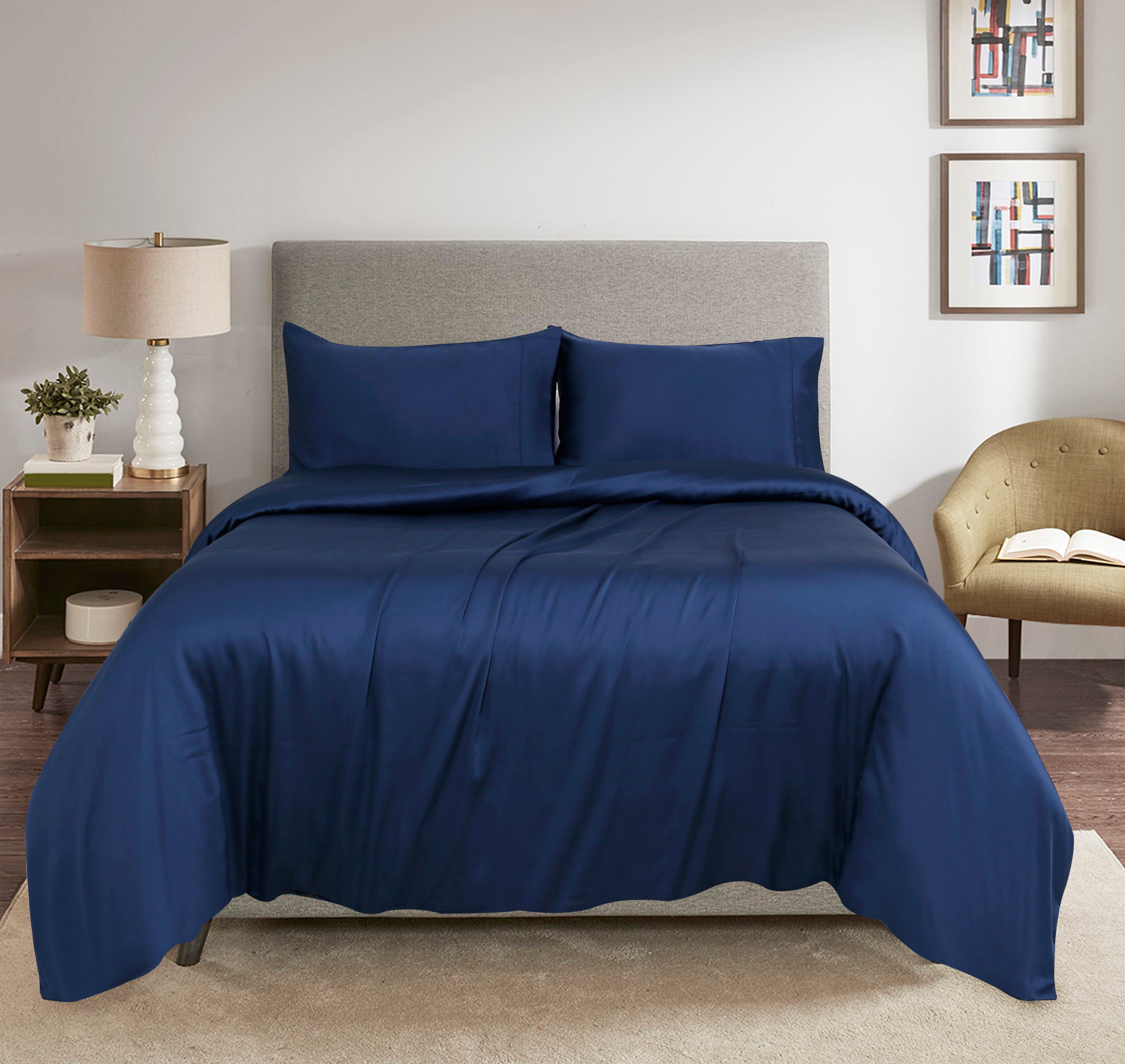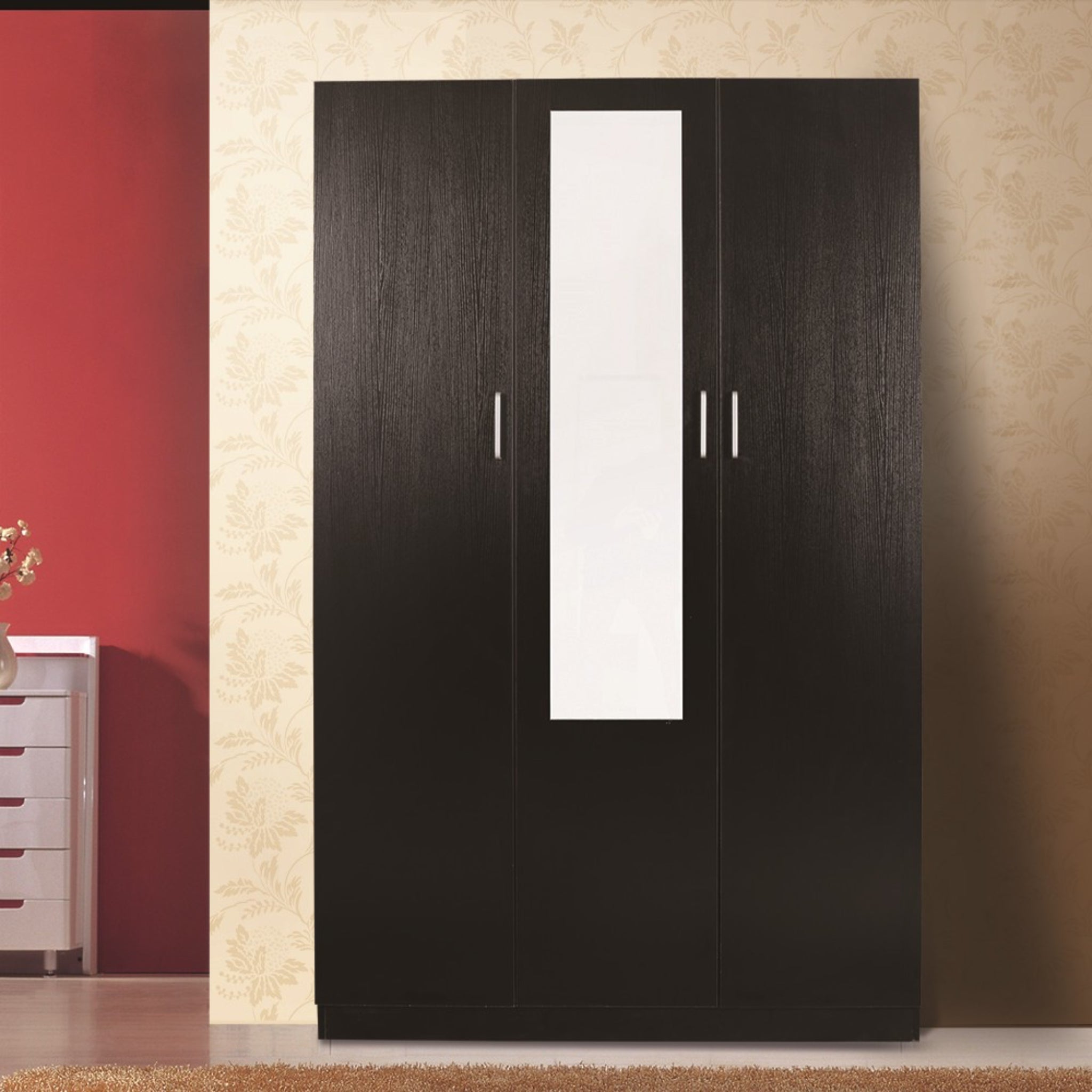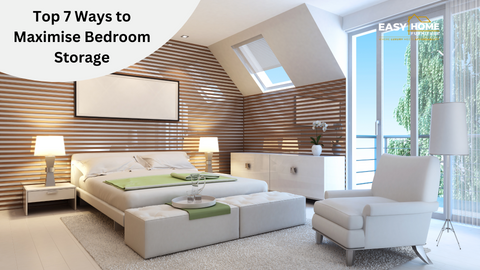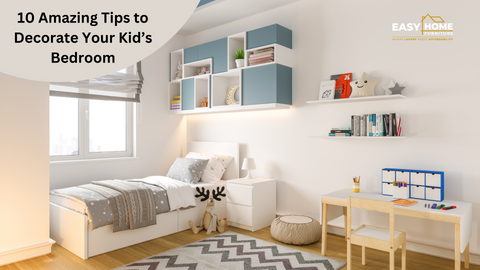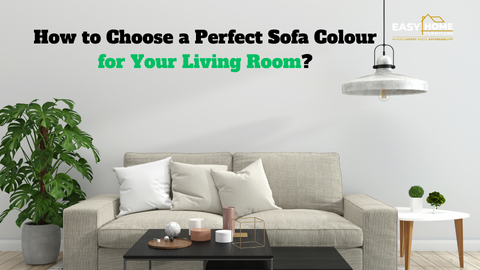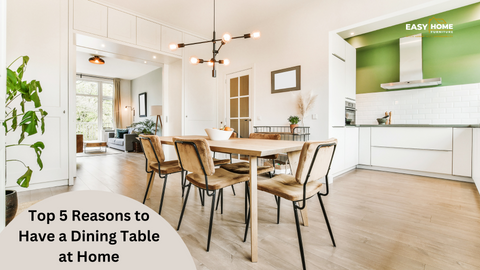Creating the perfect bedroom for your child is not just about aesthetics—it’s about fostering a space where they can grow, play, and feel safe. A thoughtfully decorated bedroom reflects their personality, enhances their creativity, and provides comfort. Below, we’ve expanded on 10 incredible tips to help you transform your child’s room into a magical, functional haven.
Why Is Decorating Your Kid’s Bedroom Important?
Your child’s bedroom serves as their personal sanctuary—a place for rest, play, and learning. A well-designed space can positively impact their mood and cognitive development. Personalized decor fosters creativity and makes them feel valued. For instance, a room designed with colors they love and themes they resonate with can spark joy and imagination. Beyond aesthetics, a neat and organized space instills discipline and responsibility. Involving your child in the decorating process strengthens your bond, making them feel connected to their space. Overall, a cozy, cheerful room is an investment in your child’s emotional well-being and growth.
10 Amazing Tips to Decorate Your Kid’s Bedroom
Designing your child’s bedroom can be an enjoyable and fulfilling task. It’s an opportunity to craft a space that showcases their unique personality and passions, turning it into a room they’ll adore spending time in. Below are 10 in-depth tips to help you create a beautifully decorated kid’s bedroom
1. Choose a Fun Theme
Choosing a theme is a fantastic way to personalize your child’s bedroom. A theme can create a cohesive look and feel that transforms the space into a magical retreat. Start by talking to your child about their favorite hobbies, interests, or characters. Whether they love superheroes, space, animals, or princesses, incorporating their preferences makes the room uniquely theirs.
For instance, a space-themed room might feature bedding with stars and planets, glow-in-the-dark ceiling stickers, and wall art of rockets or astronauts. If your child loves animals, you can include a jungle-themed rug, animal-shaped cushions, and vibrant green walls to mimic a forest. Themes like these stimulate imagination and provide a sense of wonder.
Accessories are also key to bringing a theme to life. Look for themed lamps, curtains, or even storage boxes. For a subtle approach, choose a neutral wall color and use themed decor items like posters, bed linen, and toys to complete the look. You can even find furniture that aligns with the theme, such as car-shaped beds or castle-style bunk beds.
Allowing your child to participate in the decision-making process can make the project more meaningful. Not only will they feel involved, but they’ll also enjoy the final result more. Themes can grow with your child if you choose versatile elements that can be updated easily. A fun and well-thought-out theme makes the bedroom a place of adventure and relaxation.
2. Bright Colors
Colors play a crucial role in shaping the mood and atmosphere of a room. In a child’s bedroom, bright and cheerful colors can create a lively and inviting environment. Vibrant hues such as yellow, orange, green, or blue are excellent choices to stimulate energy and creativity.

If painting the walls in a bold color feels overwhelming, consider using accent walls to add splashes of brightness without overpowering the space. For instance, a single wall with a sunny yellow shade can brighten the room, while the other walls remain neutral. If you prefer subtlety, opt for pastel versions of bright colors to achieve a softer look.
Colorful furniture, rugs, or curtains can also introduce vibrant tones without committing to painting. For instance, a bright red chair or a multi-colored storage unit can add personality and fun. Adding these elements makes it easier to update the room’s look as your child grows.
Wall decals with colorful patterns, such as rainbows, polka dots, or stripes, are another playful option. These decals are easy to apply and remove, making them ideal for evolving tastes. Mixing different shades and tones can create a dynamic and visually appealing space.
A color-rich bedroom not only reflects your child’s personality but also boosts their mood and enthusiasm. Experiment with various combinations to find the perfect balance between vibrant and harmonious, ensuring the room feels joyful and cozy.
3. Creative Storage Solutions
An organized room is key to a functional and stress-free environment. Creative storage solutions help maintain order while adding style to your child’s bedroom. Start by assessing the items that need storing, such as toys, clothes, books, and craft supplies, and identify their storage needs.
Consider using multi-functional furniture, such as beds with built-in drawers or ottomans that double as storage units. These pieces save space and provide hidden compartments for stowing away clutter. Wall-mounted shelves are another excellent option, offering easy access to books and toys while keeping the floor space clear.
Colorful storage bins and baskets are great for organizing smaller items. Label them with words or pictures so your child can easily identify where things belong. Transparent boxes also work well, allowing a quick view of their contents. For underutilized areas, like the space beneath the bed or the back of a door, try rolling storage boxes or over-the-door organizers.
Incorporating storage into the room’s decor can make tidying up more enjoyable for your child. For instance, a bookshelf shaped like a tree or animal-themed storage bins adds an element of fun. By making organization a part of the room’s design, you encourage tidiness and teach responsibility.
With the right storage solutions, you can create a room that feels open, clean, and inviting. A clutter-free environment allows your child to focus on creativity and play without distractions.
4. Personalized Touches
Personalizing your child’s bedroom adds a special touch that makes it feel uniquely theirs. These small, meaningful additions can enhance their sense of belonging and pride in their space.
One way to personalize the room is by incorporating your child’s artwork. Frame their drawings or paintings and display them on the walls as a mini-gallery. You can also use a corkboard or magnetic board to showcase their latest creations. These displays not only add character but also celebrate their creativity.
Customizing furniture is another great option. Add monogrammed cushions, blankets, or rugs featuring their initials or name. You could even install a name plaque or wooden letters above their bed. Personal touches like these make the room feel special and uniquely theirs.
Encourage your child to take part in decorating. Together, you can create DIY crafts like painted jars for storing pencils or hand-decorated photo frames. These projects give the room a unique charm and provide a bonding experience.
To make the room even more personal, incorporate items related to their hobbies or interests. For example, if they love music, display their favorite instrument or hang posters of their favorite bands. A personalized bedroom is more than just a place to sleep—it’s a space where your child can express themselves and feel truly at home.
5. Interactive Elements
Including interactive elements in your child’s bedroom can transform it into a fun and engaging space that sparks creativity and learning. These features not only provide entertainment but also offer opportunities for your child to develop new skills, encouraging them to play, explore, and imagine in ways they wouldn’t in a traditional room.
One great interactive idea is a chalkboard wall. By painting a section of the wall with chalkboard paint, you provide a space where your child can doodle, practice writing, or even play games like tic-tac-toe. This offers endless hours of entertainment and can easily be wiped clean for the next activity.
Play tents are another interactive feature that can create a cozy corner for your child to enjoy. Whether it’s a small tent for reading or a larger one for pretend play, these spaces encourage imaginative adventures. Tents come in many themes, such as castles, jungles, or even space stations, and they can be set up with pillows, blankets, and stuffed animals for added comfort.
A reading nook is another interactive idea. Set up a comfy chair or bean bag with a small bookshelf filled with your child’s favorite books. This not only encourages a love for reading but also creates a quiet and relaxing corner where your child can unwind.
Other interactive elements might include a wall-mounted activity board, a small music corner with instruments, or even a play area that incorporates building blocks and puzzles. These features help turn the room into a dynamic space, fostering your child’s creativity and cognitive development.
6. Functional Furniture
When decorating your child’s bedroom, choosing functional furniture is key to maximizing space and creating a well-organized, efficient environment. Kids’ rooms often require multiple uses of the same space, and multifunctional furniture allows you to make the most out of every square inch.
A great example of functional furniture is a bunk bed with a desk or storage underneath. This setup not only provides a comfortable sleeping area but also creates room for study or play. Many modern bunk beds have built-in desks, shelves, or drawers, which help keep the room organized while offering a dedicated space for homework or creative activities.
Lofted beds are another space-saving option. Raising the bed off the ground creates space underneath for a small play area, desk, or storage. This can be especially useful in smaller rooms where every inch counts. Lofted beds with built-in storage options, such as drawers or shelves, can help keep toys, books, and clothes neatly organized.
For a growing child, a convertible crib that turns into a toddler bed and later into a full-sized bed can save you money in the long run. Similarly, adjustable chairs or desks that grow with your child are perfect for ensuring long-term comfort and utility.
Functional furniture goes beyond just saving space; it also contributes to a room’s overall design. Look for pieces that complement the room’s theme and aesthetic while still offering practical features. This balance of form and function ensures your child’s bedroom remains both beautiful and practical.
7. Comfortable Bedding
Investing in comfortable bedding is essential for creating a cozy, restful environment where your child can sleep soundly and feel comfortable. Bedding is not only about comfort but also serves as a major design element in the room. By selecting the right bedding, you can enhance the room’s theme and make the bed an inviting focal point.
Start with soft, breathable materials like cotton or linen that will keep your child comfortable throughout the night. Choose hypoallergenic fabrics, especially if your child has sensitive skin or allergies. Layer the bed with cozy blankets, sheets, and pillows in colors and patterns that complement the room’s design.
Themed bedding is an excellent way to incorporate your child’s interests. For example, you might select a superhero duvet set, a fairy-tale princess blanket, or a sports-themed comforter. If you prefer a more neutral or versatile option, consider adding colorful throw pillows or blankets to introduce fun patterns and colors. These pieces can easily be swapped out as your child’s tastes evolve over time.
Consider adding a mattress protector for extra comfort and to prolong the life of the mattress. Memory foam toppers or mattress pads can enhance your child’s comfort, especially if they have trouble sleeping. Additionally, providing an extra cozy throw blanket or a stuffed animal for cuddling can make bedtime feel even more special.
Comfortable, soft bedding doesn’t just improve the room’s decor but also ensures your child has a restful night’s sleep, promoting their overall health and well-being.
8. Wall Art and Decals
Wall art and decals are an easy and affordable way to bring personality and character to your child’s bedroom. These decorative elements add visual interest and can help tie together the room’s theme, while being versatile enough to evolve with your child’s changing interests.
One of the easiest ways to enhance the walls is with decals. Wall decals are removable, so you don’t have to worry about damaging the paint when your child’s preferences change. Choose decals that match the room’s theme, like stars, animals, or inspiring quotes. You can create an entire mural or use individual decals to form a fun pattern.
Framed artwork can also add a sophisticated touch. Display your child’s artwork, favorite prints, or inspirational posters that reflect their personality. A gallery wall with different-sized frames can be a striking feature and can be updated as your child grows.
If your child is passionate about a particular subject, such as dinosaurs, animals, or outer space, search for wall art that reflects those interests. You can incorporate wall-mounted shelves to display figurines, trophies, or other collectibles, creating a personalized space that truly belongs to them.
The great thing about wall art and decals is their ease of update. As your child’s tastes change, you can swap out pictures, change the theme, or introduce new colors without a major renovation. This makes it a cost-effective way to refresh the room periodically, keeping it fun and dynamic.
9. Lighting
Lighting plays a crucial role in setting the mood and functionality of your child’s bedroom. The right lighting can make the room feel cozy and warm, while also providing enough light for reading, playing, or relaxing. Incorporating a mix of lighting options can add depth and enhance the room’s ambiance.
Start with overhead lighting, such as a ceiling light or chandelier that complements the room’s design. A fun, colorful light fixture can double as both a functional and decorative element. For a playful touch, consider lights shaped like animals, clouds, or stars.
Task lighting is essential for reading or study areas. Bedside lamps are a great addition to your child’s nightstand or desk. Look for lamps with dimmable features or soft, warm lightbulbs to create a calming atmosphere for bedtime.
Fairy lights or string lights can add a magical feel to the room. Hang them along the bed frame, across the walls, or around the window to add a soft, twinkling glow that’s perfect for bedtime. These lights can also be a comforting addition for younger children who are afraid of the dark.
Finally, consider nightlights with soft, adjustable brightness settings. These are perfect for young children who may need a little extra comfort at night. They can be shaped like animals or favorite characters, adding another layer of personalization to the room.
10. Play Area
A designated play area in your child’s bedroom can provide a space where they can enjoy their favorite activities, such as drawing, playing with toys, or building with blocks. By setting aside a specific area for play, you help keep the rest of the room organized while creating a place where your child can unleash their creativity.

A small table and chairs set is a great addition for activities like coloring, crafts, or puzzles. You can find kid-sized furniture that fits their proportions, making it easier for them to engage in hands-on activities comfortably.
Create a cozy corner with bean bags, floor cushions, or a play mat where your child can read, play with dolls, or enjoy quiet time. This area can double as a reading nook or a space for solo play.
Consider adding shelves or bins for storing toys, games, or art supplies. Keep the storage nearby so your child can easily access their favorite items without cluttering the room. Additionally, display toys, books, or collections that your child enjoys.
A well-planned play area not only keeps the room neat but also gives your child the freedom to explore and enjoy their favorite activities. It can be a place where they express their imagination, develop new skills, and have fun.
Decorating your child’s bedroom is more than just aesthetics; it’s about creating a nurturing environment where they can thrive. By incorporating themes, colors, storage solutions, and interactive features, you can design a space that’s both functional and enchanting. Take the first step today by exploring a range of kid-friendly furniture and accessories. Transform your child’s bedroom into a magical retreat they’ll cherish for years to come!




